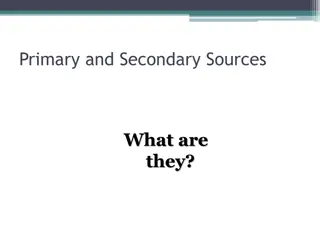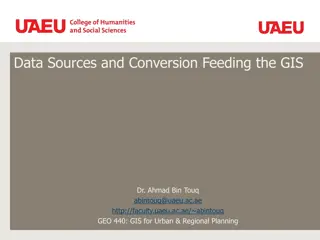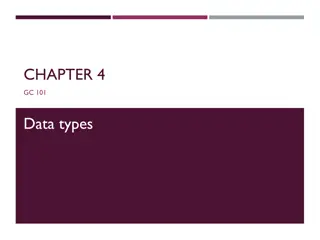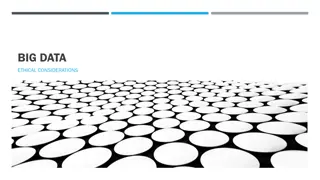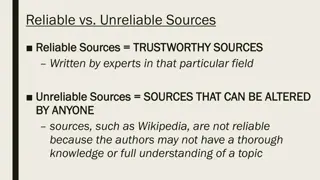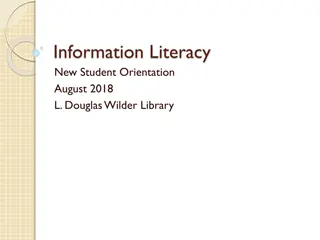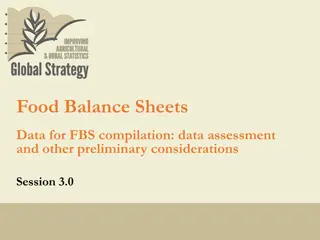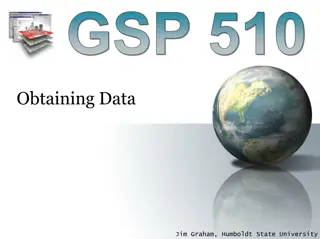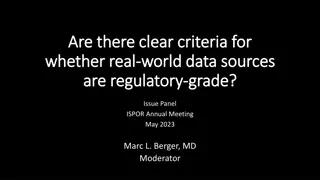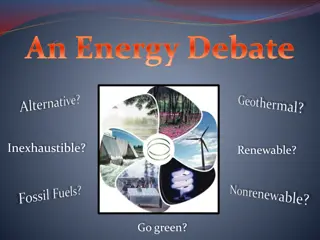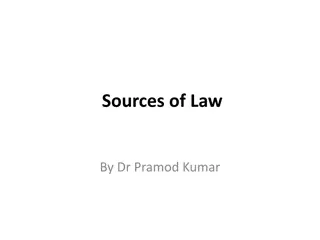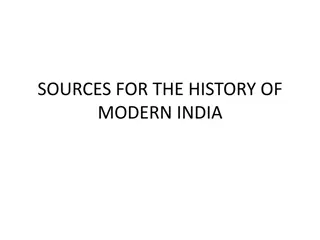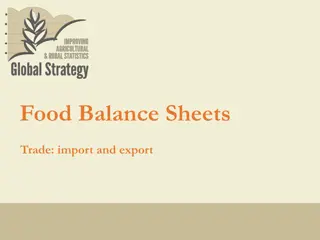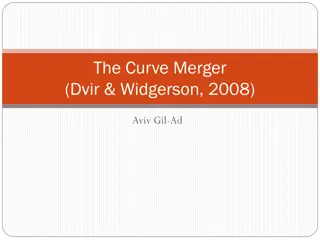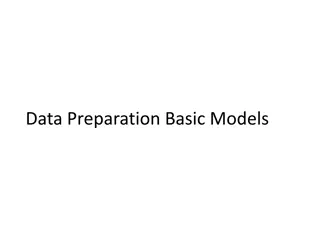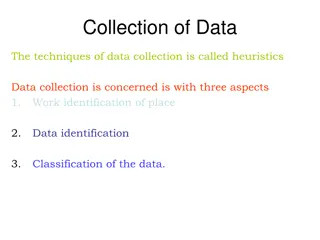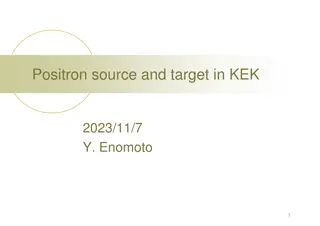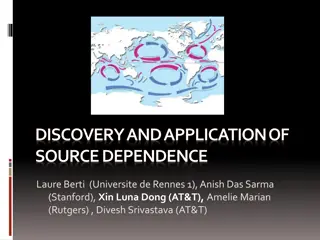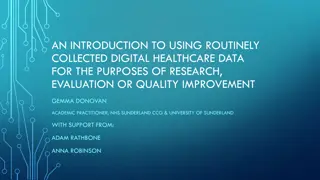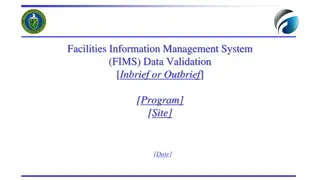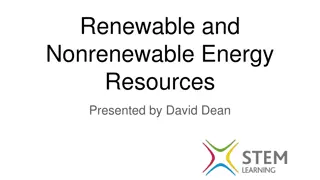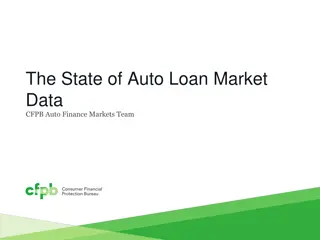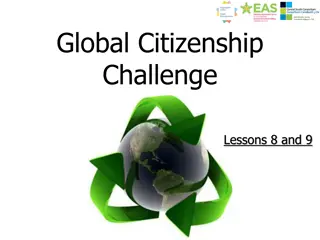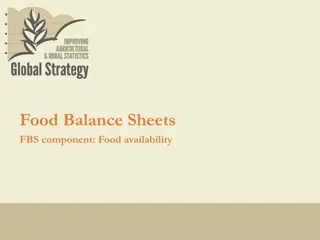Understanding Data: Types, Sources, and Considerations
This lecture delves into the concept of data, covering its types, sources, and factors to consider when working with it. Learn how to select appropriate data, be mindful of biases, refine inquiries effectively, and parse text using regular expressions. The content explores what data is, its formats, scopes, and biases, emphasizing the importance of asking precise questions for meaningful analysis.
Download Presentation

Please find below an Image/Link to download the presentation.
The content on the website is provided AS IS for your information and personal use only. It may not be sold, licensed, or shared on other websites without obtaining consent from the author. Download presentation by click this link. If you encounter any issues during the download, it is possible that the publisher has removed the file from their server.
E N D
Presentation Transcript
Lecture 2: Data What it is, where to get it, and factors to consider. Harvard IACS CS109B Pavlos Protopapas, Kevin Rader, and Chris Tanner
Learning Objectives Understand different types and formats of data Be able to soundly select appropriate data Have awareness of biases that exist Be able to refine questions to suite your true inquiry Understand how to parse text with regular expressions 2
Agenda What is data? Aspects of data: formats, scope, biases, etc Asking precise questions Parsing data with Regular Expressions 3
Agenda What is data? Aspects of data: formats, scope, biases, etc Asking precise questions Parsing data with Regular Expressions 4
What is data? Def1 Factual information (such as measurements or statistics) used as a basis for reasoning, discussion, or calculation Information in digital form that can be transmitted or processed Def2 Information output by a sensing device or organ that includes both useful and irrelevant or redundant information and must be processed to be meaningful Def3 6
What is data? Def1 Factual information (such as measurements or statistics) used as a basis for reasoning, discussion, or calculation Information in digital form that can be transmitted or processed Def2 Information output by a sensing device or organ that includes both useful and irrelevant or redundant information and must be processed to be meaningful Def3 7
What is data? Def1 Factual information (such as measurements or statistics) used as a basis for reasoning, discussion, or calculation Information in digital form that can be transmitted or processed Def2 Information output by a sensing device or organ that includes both useful and irrelevant or redundant information and must be processed to be meaningful Def3 8
Factual information (such as measurements or statistics) used as a basis for reasoning, discussion, or calculation Measurements from a thermometer every hour for a year Scenario1 Scenario2 Counts from a person who tracks the days that a particular hummingbird visits his birdfeeder across an entire year Tweets from a politician Scenario3 Readouts from a mysterious sensor that was purchased from a local yard sale. Scenario4 9
Factual information (such as measurements or statistics) used as a basis for reasoning, discussion, or calculation Measurements from a thermometer every hour for a year Probably inaccurate data Scenario1 Scenario2 Counts from a person who tracks the days that a particular hummingbird visits his birdfeeder across an entire year Probably missing data Probably missing data Tweets from a politician Scenario3 Readouts from a mysterious sensor that was purchased from a local yard sale. Scenario4 10
Factual information (such as measurements or statistics) used as a basis for reasoning, discussion, or calculation Measurements from a thermometer every hour for a year Scenario1 Scenario2 Counts from a person who tracks the days that a particular hummingbird visits his birdfeeder across an entire year Tweets from a politician Scenario3 Probably not 100% factually true Readouts from a mysterious sensor that was purchased from a local yard sale. Scenario4 11
Factual information (such as measurements or statistics) used as a basis for reasoning, discussion, or calculation Measurements from a thermometer every hour for a year Scenario1 Scenario2 Counts from a person who tracks the days that a particular hummingbird visits his birdfeeder across an entire year Tweets from a politician Scenario3 Don t know what it represents. Just numbers. Still data. Readouts from a mysterious sensor that was purchased from a local yard sale. Scenario4 12
What is data? A single piece of information, which can be treated as an observation Datum The plural of datum; multiple observations Data A homogenous collection of data (each datum must have the same focus) Dataset 13
What is data? Source: http://phdcomics.com/comics/archive_print.php?comicid=1816 14
What is data? Everything can be data! Just requires making observations. 15
Before we dive too deep into the different aspects of data, recall the Data Science process Ask an interesting question Get the Data Explore the Data Model the Data Communicate/Visualize the Results 16
Before we dive too deep into the different aspects of data, recall the Data Science process Ask an interesting question Get the Data Explore the Data Model the Data Communicate/Visualize the Results 17
Before we dive too deep into the different aspects of data, recall the Data Science process Ask an interesting question Get the Data Explore the Data Model the Data Communicate/Visualize the Results 18
Before we dive too deep into the different aspects of data, recall the Data Science process Ask an interesting question Get the Data Explore the Data Model the Data Communicate/Visualize the Results 19
Before we dive too deep into the different aspects of data, recall the Data Science process Ask an interesting question Get the Data Explore the Data Model the Data Communicate/Visualize the Results 20
Before we dive too deep into the different aspects of data, recall the Data Science process Ask an interesting question Get the Data Explore the Data Model the Data Communicate/Visualize the Results 21
Before we dive too deep into the different aspects of data, recall the Data Science process Ask an interesting question Get the Data Explore the Data Model the Data Communicate/Visualize the Results 22
Before we dive too deep into the different aspects of data, recall the Data Science process Ask an interesting question Get the Data Explore the Data Model the Data Communicate/Visualize the Results 23
Before we dive too deep into the different aspects of data, recall the Data Science process Ask an interesting question Get the Data Explore the Data Model the Data Communicate/Visualize the Results 24
Before we dive too deep into the different aspects of data, recall the Data Science process Extra Credit Knowledge: computer science mostly concerns computational models and related aspects (e.g., what is computable, how to efficiently compute, how to efficiently store data for computing) Ask an interesting question Get the Data Explore the Data Model the Data Communicate/Visualize the Results 25
Agenda What is data? Aspects of data: formats, scope, biases, etc Asking precise questions Parsing data with Regular Expressions 26
Agenda What is data? Aspects of data: formats, scope, biases, etc Asking precise questions Parsing data with Regular Expressions 27
Considerations when choosing a dataset We want data that can answer our question(s) and is preferably easy to work with. Data comes in all shapes and sizes though. 28
Considerations when choosing a dataset What data is necessary to answer our question? How difficult is it to analyze a dataset? Is the source authoritative? (.com, .net, .org, .gov, .name) Comprehensive data vs sampled data? Biases What is the allowed usage of data under its license? Who collected the data? When was the data collected? How was the data collected? How is the data formatted? Does your data collection procedures need to be approved by an IRB? Confidentiality Concerns 29
Considerations when choosing a dataset What data is necessary to answer our question? How difficult is it to analyze a dataset? Is the source authoritative? (.com, .net, .org, .gov, .name) Comprehensive data vs sampled data? Biases What is the allowed usage of data under its license? Who collected the data? When was the data collected? How was the data collected? How is the data formatted? Does your data collection procedures need to be approved by an IRB? Confidentiality Concerns 30
Considerations when choosing a dataset: format difficulty hard for computers easy for computers easy for people hard for people 31
Considerations when choosing a dataset: comprehensive data Have access to all the data observations that exist, which is usually a lot 13 million articles Collected and digitized as part of generalized procedures of an institution ~500 million tweets per day 100,000s votes per year 32
Considerations when choosing a dataset: sampled data When collecting individual data is relatively expensive Only a portion of the population is sampled Not just restricted to polling or surveys 33
Considerations when choosing a dataset: biases Common biases in selecting the source of data Omission: Using only arguments from one side Source selection: Include more sources or more authoritative sources for one side over the other Story selection: Regularly including stories that agree or reinforce the arguments of one side Placement: Using the benefit of the perceived importance of position to highlight certain stories 34
Considerations when choosing a dataset: biases Common biases in selecting the source of data Labelling (two types): Using only arguments from one side Labeling people on one side of the argument with labels and not the other Spin: Story provides only one interpretation of the events 35
Considerations when choosing a dataset: biases Common biases in the data itself (i.e., sampled datasets) A bias in sampled data occurs when a procedure causes the sample to overrepresent a subpopulation Biases may not necessarily be intentional Even if you don t think your over-/ under-representation of a subpopulation will impact your results, it s still a bias Always strive to minimize any biases in your data collection procedures 36
Considerations when choosing a dataset: biases Gallup Polls Randomly calls two groups of ~500 people a day by sampling among all possible phone numbers For landlines, asks for household member who has the next birthday Calls people living in all 50 states Tries to assure 70% cellphone, 30% landlines Weights data to reflect the demographics of the general population 37
Considerations when choosing a dataset: biases IMDb Movie Ratings Registered users rate films 1-10 stars; they are an overrepresented subpopulation relative to the general population Registered users who rate movies in their free time further over represents a specific segment of the general population Men Are Sabotaging The Online Reviews Of TV Shows Aimed At Women1 60% who rated Sex in the City were women. Women gave it a 8.1, men gave it 5.8. 1 fivethirtyeight.com 38
Considerations when choosing a dataset: biases IMDb Movie Ratings 39
Considerations when choosing a dataset: biases Yelp Reviews Registered users rate businesses on a 1-5 star scale Registered users tend to represent a certain subset of the population (those who are more social media inclined and opinionated) Customers with extreme experiences are more likely to voice their opinions 40
Considerations when choosing a dataset: biases Yelp Reviews 41
Considerations when choosing a dataset: biases Yelp Reviews Longwood Medical Harvard Square 42
Considerations when choosing a dataset: biases Nearly all datasets involve a human in some way or another, and our world is far from being uniform and equal. This is not an excuse but evidence that your dataset probably has bias. The goal is to minimize it as much as possible. When we learn about modelling, the same applies. 43
Considerations when choosing a dataset: formats While computers are getting better at understanding photos and videos, text and numbers are much easier. Further, structured data (e.g., spreadsheet formatted data) is much easier than unstructured data (e.g., free-flowing essays) 44
Considerations when choosing a dataset: formats Plain Text ALICE S ADVENTURES IN WONDERLAND Ends in .txt (generally) Lewis Carroll THE MILLENNIUM FULCRUM EDITION 3.0 No formatting, font type, font size, CHAPTER I. Down the Rabbit-Hole color, etc. Alice was beginning to get very tired of sitting by her sister on the bank, and of having nothing to do: once or twice she had peeped into the book her sister was reading, but it had no pictures or conversations in it, and what is the use of a book, thought Alice without pictures or conversations? Text position is provided by whitespace characters (space, tab, return) 45
Considerations when choosing a dataset: formats Plain Text CSV (.csv) Tab-separated (.tsv) Delimiter: The character that separates each value 46
Considerations when choosing a dataset: formats XML <roll_call_vote> <congress>115</congress> <session>1</session> <members> <member> <member_full>Alexander (R-TN)</member_full> <last_name>Alexander</last_name> <first_name>Lamar</first_name> <party>R</party> <state>TN</state> <vote_cast>Yea</vote_cast> </member> </members> </roll_call_vote> XML (.xml) These colors > aren t actually stored in the file, the editor just adds them on your screen to help make it look prettier 47
Considerations when choosing a dataset: formats JSON JSON (.json) JavaScript Object Notation Like XML, data is annotated A nesting of key-value pairs When whitespace is removed, can be more space efficient than XML 48
Considerations when choosing a dataset: formats Plain Text vs XML vs JSON They can all express the same content Plain Text doesn t have structure, but is universally robust XML is the most verbose, harder to parse JSON doesn t have </stuff_here> end tags JSON is more succinct than XML (easier to parse) 49
Its important to re-evaluate your previous steps to ensure youre on the right track Ask an interesting question Get the Data Explore the Data Model the Data Communicate/Visualize the Results 50






